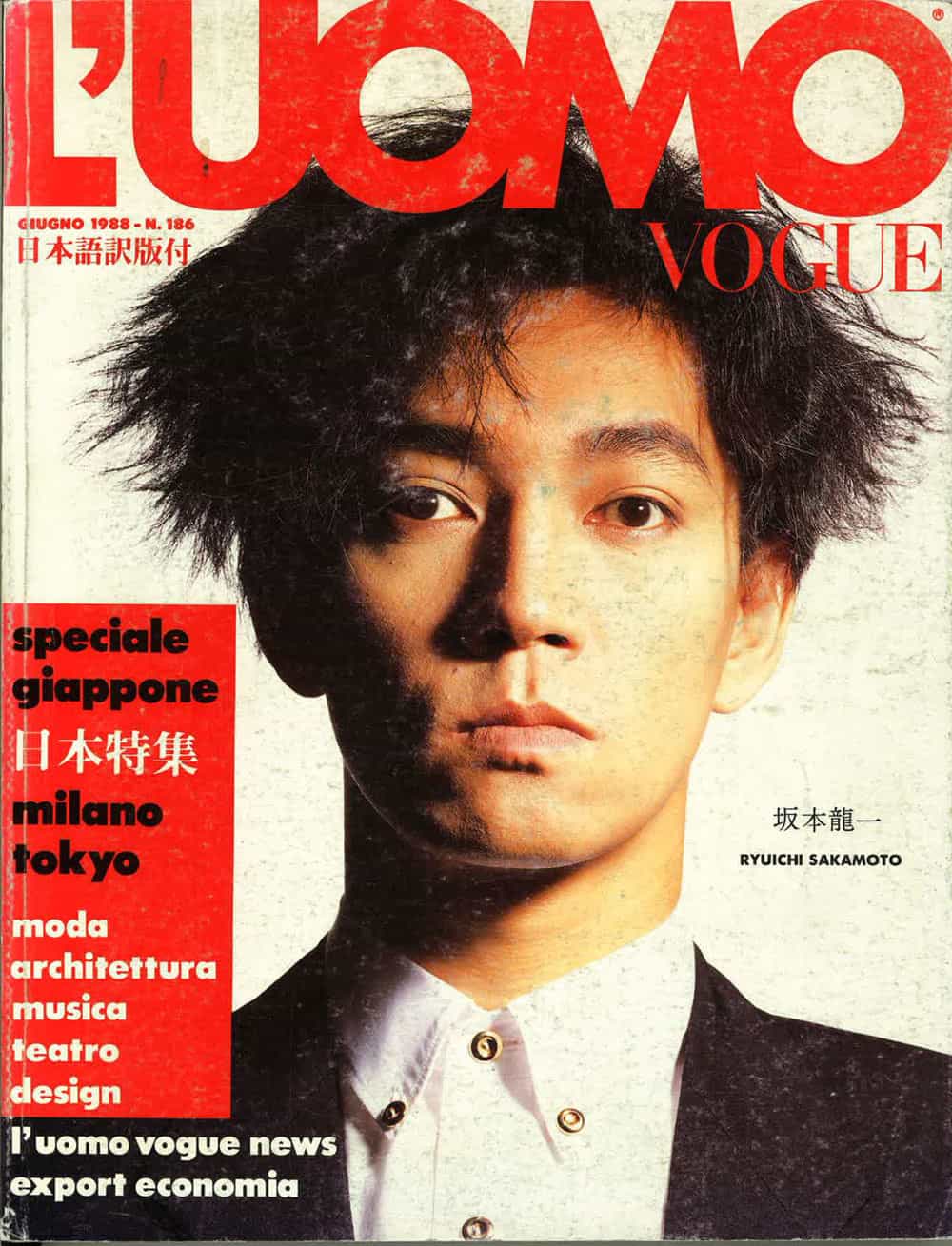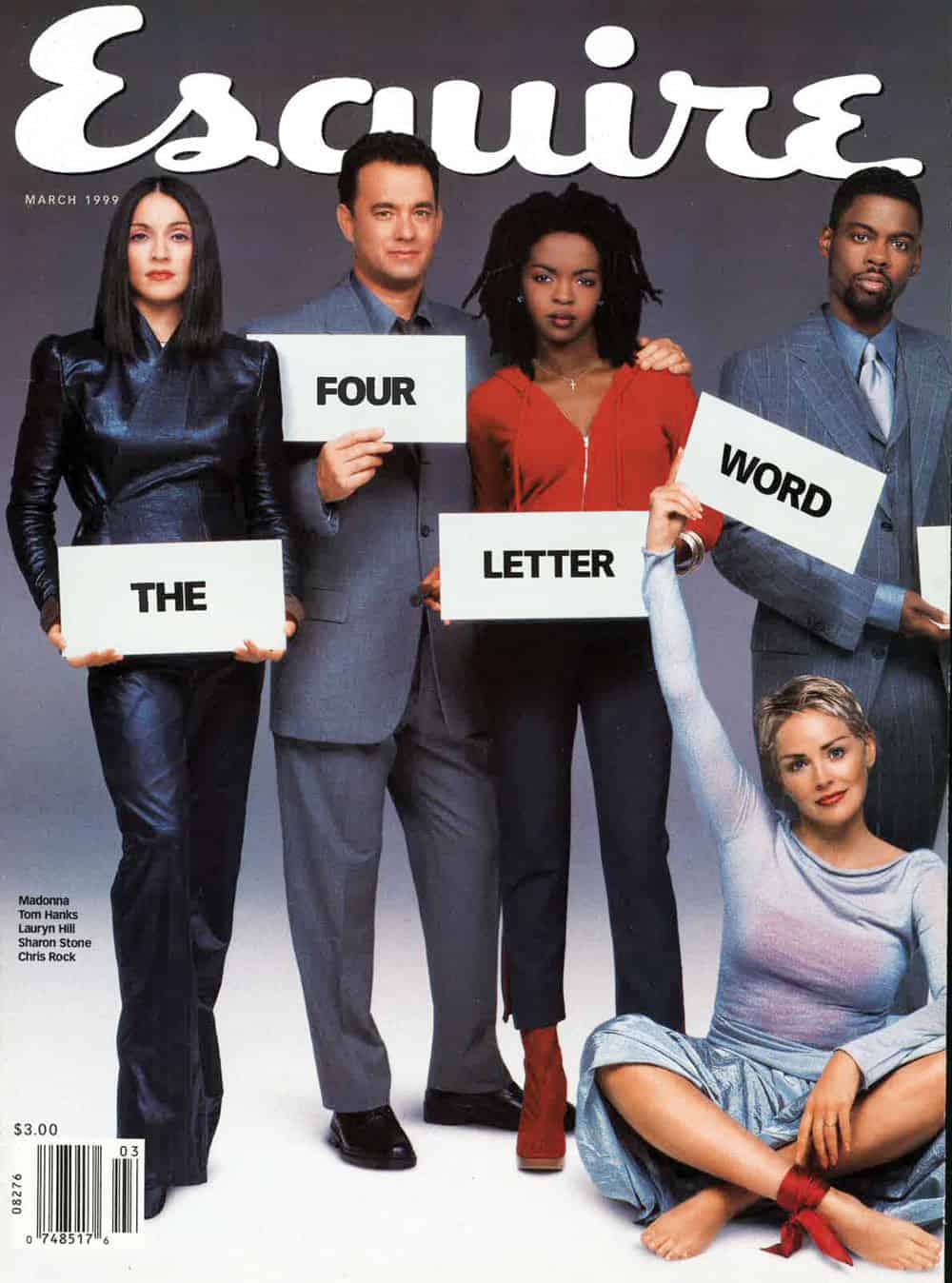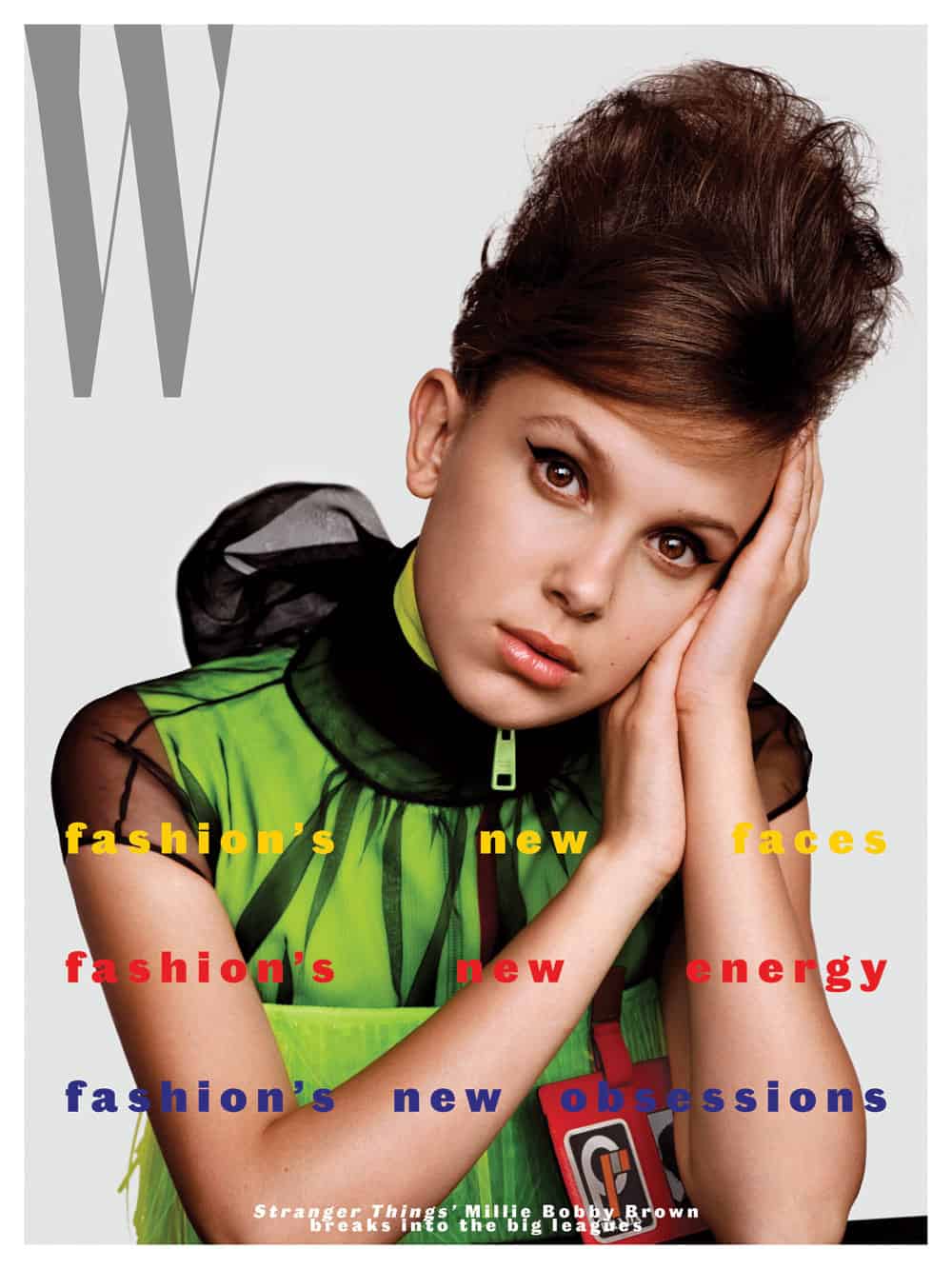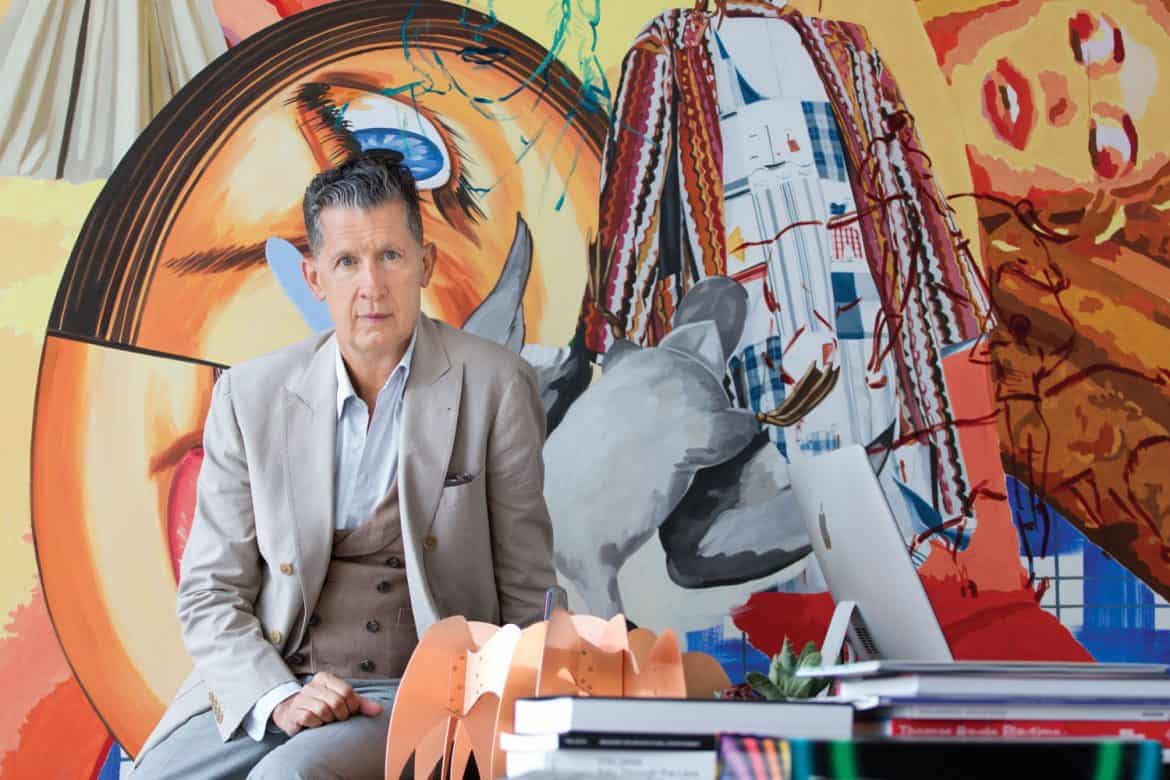When it comes to cross-pollinating fashion, art, and Hollywood, few people do it quite like Stefano Tonchi, much less in his elegant, impeccably suited, innately chic manner. As W prepares to enter the next chapter of its history, Tonchi embarks on a trip down memory lane.
How did your passion for glossies begin?
I grew up in love with magazines. I remember, before I was 18, going at 5 a.m. to the railway station in Florence, where there was a newsstand that would get magazines from England, like New Musical Express. The first real magazine I put together was Westuff, in 1984: I was writing, art-directing, overseeing creative design, and trying to sell ad pages. It was modeled after Interview; this mix that would become very much my obsession— fashion, entertainment, and art. Westuff was self-financed for many years, and then we got sponsorship from Pitti Immagine, when they started a small publishing company, mostly focused on books. It was an energetic, creative moment for Florence. Westuff lasted for four years, available internationally, with 25,000 copies per issue, in Italian and English. Mr. [Giorgio] Armani loved the magazine so much, he wanted to buy it, so Westuff became Emporio Armani Magazine.
What brought you to L’Uomo Vogue?
Well, I was going to shows for Westuff, and during one [Fashion Week] trip, I was asked if I wanted to join L’Uomo Vogue. It was such a successful, incredibly prestigious publication. To be a journalist in Italy, you had to go through a very established process, working for five years, then take an exam to be accredited…but it was actually a way for fascism to control journalists; Mussolini created it in the ’20s. At university, I studied political science and was interested in journalism, but there wasn’t really a school for journalists then. The beauty of L’Uomo Vogue then was that you really got to travel, and the issues were focused on one place. My life at L’Uomo Vogue was fantastic, a very fun time.
What brought you to NYC?
My last year there, there was a new editor in chief, Franca Sozzani, and she let me move to New York, working for Condé Nast International, on L’Uomo Vogue, Casa Vogue, Italian Glamour, things like that. I also had personal interests for moving to New York. I was living with David Maupin, who’s now my husband, and he wanted to be in New York, because being an art dealer in Milan was not that successful. Then, kind of out of nowhere, I met this lady, Alexandra Penney, who was then the new editor in chief of Self. She was doing super well but was frustrated the magazine was not considered a fashion magazine. She became an important mentor.

(L’Uomo Vogue)
What appealed to you about Self?
Alexandra got enchanted by the idea of me working for her, and I was like, “No, thank you, I’m happy at L’Uomo Vogue and I don’t want to work at a fitness magazine.” But I really wanted a green card, and I wanted to be paid in American dollars, not Italian lira. She offered me so much money and freedom. I spent six years at Self.
What was that like?
I’d call them my formative American years, because technically Condé Nast turned me into an American journalist; it changed how I write. Anglo-American journalism is much more about facts and lists, while Italian journalism is much more about opinions. I also did a tour of America, doing focus groups, learning things like, everyone is brunette, but they only like blondes; everything is too expensive, but if you show cheap clothes, they’re not happy. Magazines were run by focus groups then. It was such a wake-up call for me, coming from a magazine like L’Uomo Vogue, where the “focus group” was, “Did Mr. Armani call and love it?”
And then you went to J.Crew. How did that happen?
I met [then-CEO] Emily Woods socially. Emily said, “My father [J.Crew founder Arthur Cinader] is leaving; this investment group, TPG, is taking over, so J.Crew will change completely over the next year, and I want you to work with me on this.” It was a big salary, let’s put it that way. I worked at J.Crew for two years as creative director. We shot 18 to 20 catalogs every year, plus the ad campaigns, and opened stores.

(Esquire)
Was returning to the editorial world always your plan?
I absolutely thought I would go back. David Granger and my best friend, Scott Omelianuk, had a huge fight with Art Cooper, and they left GQ for Esquire. Quite a scandal! One year into my time at J.Crew, David and Scott wanted me to join them at Esquire. I was like, “I just got this J.Crew job, and it pays a lot of money.” A year later, they called me back again, and I said yes. I took a huge salary cut from J.Crew to Esquire, but I wanted to go back [to editorial] and I liked David. We had a great relationship.
What did you get out of your years at Esquire?
As a journalist, the holy grails were Esquire and The New York Times. But when I arrived at Esquire, it was in the worst shape possible… on the brink of closing. We had to rebuild, slowly, slowly, slowly. I used to call [Esquire’s then-publisher] Valerie Salembier the mortician, because she’d take a [magazine] corpse and revive it. [Laughs]
Then you headed to the other holy grail: The New York Times. How’d that happen?
I was happy with David and Esquire; Adam Moss asked me to apply for the job, on the suggestion of Amy Spindler, whom Adam really respected. Adam asked me to present him ideas. What I did was put books, magazines, things I’d done, in a box and sent it him; I got the job. I didn’t even think about a résumé! I only worked with Adam for six months before he left for New York.

(T Magazine)
How did you come up with the concept for T?
It wasn’t 100 percent mine, but I saw European newspapers putting out supplements with one-letter names, like La Repubblica’s D, and Financial Times had started doing How to Spend It. So I thought, let’s call it T. I worked with designers, editors that were at the Times, including Lynn Hirschberg, who was working on the Sunday magazine. With a lot of patience, understanding, and convincing, I brought them all to T. It grew fast; we went from 12 issues to 14 to 16, and we made a huge amount of money for the company. We just ran with it, and when it became a big success, nobody stopped it, because the magazine had become something incredibly valuable. I always hear that T was such a business success; yes, I know, but also, readers loved it. I remember and hear, still, people talking about [T’s early days], how it was this fantastic present you’d receive, such beautiful images and design.
How did Condé lure you back to helm W?
I had a little bit of an obsession with Mr. [Si] Newhouse; every time I’d meet with him, he was curious and seductive. He’d offer me different jobs that I refused. He wanted me to run House & Garden; he said, “If you don’t take it, we will close it.” I told him I was happy where I was, and they closed the magazine. At some point, [Condé] told me they had a great opportunity. I was thinking it was Architectural Digest, which was already in trouble at the time, but it was W. I thought, “What a strange choice!”

(W)
What was W like at that time?
I’d look at it sometimes, but I always found Vogue more interesting than W. I’m quite a popular [culture] journalist. I was never about being a snob; I come from a city like Florence where the aristocrats were everything, so I always hated aristocracy. These are all the things, the fascinations W had — the snobbishness, “I’m better than you” approach. Even when they did collaborations with artists, it was all about showing, “We know more than you do.”
Why were you drawn to the job?
Well, Si said, “You can do whatever you want with it; that was called T, this is called W, it’s just a different letter, technically.” It was seductive to come back to Condé Nast; I was going through a lot of arguments with The New York Times. I think Mr. Newhouse found me in a very specific week, when I was just like, “F**k it, if they don’t understand it, they’ll pay for it.” I love that the first person they took [as successor] was Sally [Singer]; they thought I was the most commercial person on the planet, and wanted to go back to doing “real journalism.” Those were hard words to read.
What are your proudest achievements at W?
I brought a completely different approach to the entertainment world, and made W a player in that arena. Last year, we had the only Daniel Day-Lewis story; in October, we’ll have the only Bradley Cooper story. We’ve been discovering actors and actresses, putting them on the cover before anyone else. Jennifer Lawrence, Emma Stone, Rooney Mara, Jessica Chastain, Lupita Nyong’o, Millie Bobby Brown, Alicia Vikander—I can go on and on. There were artist profiles before my time, but I think we really cover contemporary artists in every issue; and the Art Issue is kind of an event, I’m very proud of that.
Did you have any turf wars within Condé regarding entertainment coverage?
I’m not shy to say, I remember when we did our first triple-gatefold cover, with Jennifer Lawrence, Jessica, Chastain, Emma Roberts, Zoé Kravitz—quite a cover—I got a note, “Never again.” Triple-gatefold belongs only to Vanity Fair, and people got upset we did that. That started a conversation, but W has always been fighting for its space in this company.

(W)
Soon, W may not need to fight over turf…
The news that W is for sale makes a lot of sense, because this brand had a fantastic history before Condé Nast, and I think we’ll have a great future outside of Condé Nast. Or, maybe, in collaboration with Condé Nast! I think it’s great that [Condé Nast] recognizes the value of this brand. They could’ve decided to close it, if there wasn’t value, or if it was losing so much money, as some people like to say.
Will you stay with W if it leaves Condé Nast?
I think I will. I hope to find investors who want to take over W, because I really believe in the potential of this brand. Outside of Condé Nast, there are so many things we could do if we’re not in competition with Vogue or Vanity Fair. We could have our own conference circuit, our own celebrity talks, our own fashion awards. Why did we change frequency, going down to eight issues? You have to be out in the print market when there’s actually print advertising, and when people want to look at a magazine. People don’t go to the newsstand every month. They don’t even expect it [as a subscription] at home. They’re consuming daily. So when do you put out an issue? When you can offer, and finance, something exceptional.
Who cares about going to the newsstand?
Soon there will be no newsstand! Why stick to paradigms that nobody cares about anymore? It’s about breaking the rules, which is W’s tradition. Who have you mentored over the years? I hope I’ll be judged by the people I’ve worked with. I think I’m one of the few editors in the building that has created successful editors [in chief]. I was so proud of Edward [Enninful] when I heard [about British Vogue], but I was proud of myself, too. I gave him the platform to get that job, to show his quality. When Jonathan Newhouse said he was looking for a new editor for Vogue Mexico, I told him there was one person he had to meet: Karla Martinez de Salas. And I’m sure that Rickie [De Sole] has a great future after W; if she becomes the editor of some magazine, I’ll say, “I told you!”
Any advice for the next generation of editors?
Follow your instincts, stay close to your inspirations, and never stop being curious. If you can, make an extra trip to see that exhibition, that fashion show, that gallery. Staying home and being happy about who you are isn’t going to bring you anywhere.

(W)
Stefano’s Fan Club
“Stefano’s radar is attuned far beyond the world of current fashion: There is no wavelength he does not tap into. This is how he plants in W the breadth and breath he provides — and in the milieu it nourishes in turn. His antennae are twitching constantly: His nose and instinct for reading the wind just beyond the horizon, nonpareil. A glimpse of Stefano across a crowded room: Check his gleeful openness, his optimism, like a zealous fisherman striding out into the dawn with a big empty bag to fill. Up for it, down with it, on to it. He’s a cultural activist in the suavest of clothing. Fashion isn’t the half of it…”
—TILDA S WINTON
“Stefano is downright talented. He continues to push the industry forward with his unique vision and his penchant for taking risks. Under his stewardship, the pages of W have been imaginative and the covers, iconic. He is masterful at infusing art, film, fashion, and commerce — with his creativity always grounded in restraint and impeccable taste. He is a trailblazer. I feel privileged to also call him a great friend. His generosity of spirit, quick wit, and warmth are immeasurable.”
—TORY BURCH
“Stefano believes in magazines and the power of what they can be, and he’s a huge believer in talent and where talent will take you. Stefano is a joy to work for, and he’s someone who can accomplish things. It sounds like a small thing, but it really isn’t. Normally in an office, everyone will get sparked, but then the spark dies. He keeps the spark alive and enhances it. He’s very entrepreneurial, so anything is possible. He’s always thinking ahead. In the next 10 years, I imagine W becoming a major multi platform enterprise — the magazine, plus video, a TV series, a talk show, a master class, panel discussions, and events. W represents something much larger than just a magazine, and I see Stefano at the center of it, inventing that new world. ”
—LYNN HIRSCHBERG
Subscribe to our newsletter and follow us on Facebook and Instagram to stay up to date on all the latest fashion news and juicy industry gossip.

